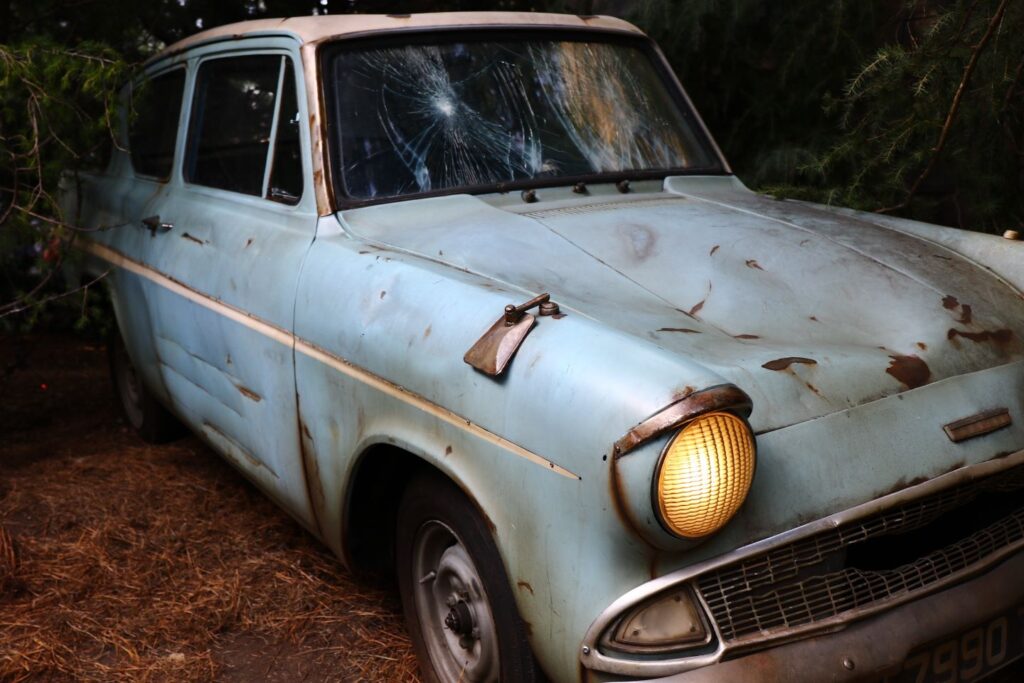Author: Dr Daniel Coren CEng MIMechE FHEA, Director of Studies for Automotive MSc courses
From diving and swirling to barrelling and tumbling, Daniel discusses the almost magical development of combustion chambers.
University of Bath students have a strong track record in competitive sports. Our British Swimming Performance Centre members have won 13 medals across the last three Olympic Games. To witness a four-and-a-half forward somersault dive (a bit like watching a washing machine on spin-dry in mid-air) is to be impressed by the splendour of human endeavour.
Automotive legend has it that the first person to develop a way of encouraging air to dive into the combustion chamber of a reciprocating car engine with a forward rolling motion was not Harry Potter but engineer Keith Duckworth. ‘Barrel Swirl’ is the name he gave to this in-cylinder and combustion chamber air motion. It improved the uniformity of mixing incoming air and fuel, resulting in more complete combustion. And this led to reductions in both fuel consumption and exhaust emissions. The improved mixing also increased overall flame propagation speeds towards their physical limits, reducing the time required for the mixture to combust. This allowed engines to operate at higher speeds, thus producing power at higher rates. This was important for Cosworth (the eponymous portmanteau of the business partnership between Mike Costin and Duckworth) in developing their racing car engines.
The dance of progress
Hitherto, induced in-cylinder bulk motion was achieved through ‘Swirl’, where entering air rotated primarily about a vertical axis. However, the air rotates primarily around a horizontal axis with Barrel Swirl. One way to picture these competing approaches is to consider a ballet dancer performing a spinning movement.
- Swirl: picture an engine with a vertical cylinder bore viewed from the side. A spinning dancer appears in profile, positioned where the piston would normally move up and down. Some engines are this big!
- Barrel Swirl: picture the same engine, again from the side. But the dancer now appears as if viewed from above. We know that as spinning dancers retract or extend their limbs, their rate of rotation increases and decreases. This is one way to witness the conservation of angular momentum. (No dancers were harmed as a consequence of this progress!)
The advantage of Barrel Swirl is that, as the piston moves upward on the compression stroke, the effective radius of rotation of the air and fuel mixture reduces. As with the ballet dancer, angular momentum is conserved, and the rate of rotation is increased. In these circumstances, an increase in mixture uniformity can be achieved.
Mobillbus Circumage!
Roll on a few decades, and optical techniques, in conjunction with silica-quartz research engines, allowed this motion to be studied more precisely. Nowadays, we use the term ‘Tumble’ rather than Barrel Swirl. But it turned out that Duckworth was right, leaving the finer flow physics to be wrapped up with the twentieth century.
As the twenty-first century approached, a book-reading phenomenon caused this to be looked at again - but with a new twist! The main character in these popular books was not Keith Duckworth, but a certain Harry Potter. The stories of sorcery and magic provided great entertainment for children, and a source of guilty pleasure for some adults, too. They also featured a curiously shaped car with capacity for flight, and gave rise to a potion stirring charm, ‘Mobillbus Circumage’. The car in question was a Ford Anglia 105E. Its launch was somewhat overshadowed by the simultaneous arrival of Issigonis’s trend-setting front-wheel drive Mini. But as we shall see, it turned out to contain some hidden gems involving flow motion of a circular nature.
- The reverse rake rear window was an unusual design at the time, but one that encouraged localised rotating airflow (bound vortices). This contributed to a reduction in overall aerodynamic drag forces. It was enough to secure the British Saloon Car Championship in 1966, and a win at Silverstone with Anita Taylor behind the wheel. Look at any modern small car and you will see a reverse step where the roof meets the rear window for similar reasons.
- The engine design lent itself to performance enhancement, especially where in-cylinder air motion and high engine speed operation is concerned. It was one of the first clean-sheet designs since the 1947 abolishment of the RAC (Royal Automotive Club) ‘horsepower rating’ (as used to calculate a ‘horsepower tax’), which had hitherto encouraged small bore, long stroke engine configurations. One who saw this potential was a certain Keith Duckworth, who developed the Cosworth ‘MAE’ (Modified Anglia Engine). This led to a family of advanced high-speed engines, including one of the most successful Grand Prix engine designs (the DFV). Barrel Swirl was a ‘secret ingredient’ common to them all.

We now find ourselves left with a few questions. If the Ford Anglia is a milestone in automotive engineering progress, in which Duckworth's Barrel Swirl plays an important role, then is the Anglia-driving Harry Potter, and the Hogwarts-inspired stirring charm, somewhere at the heart of the advancement of automotive propulsion systems and low-drag bodywork aerodynamics? If so, can Potter claim to be the ultimate automotive engineer? Lastly, will the next Potter book be Harry Potter and the Mystery of the Tin Duck?
Respond